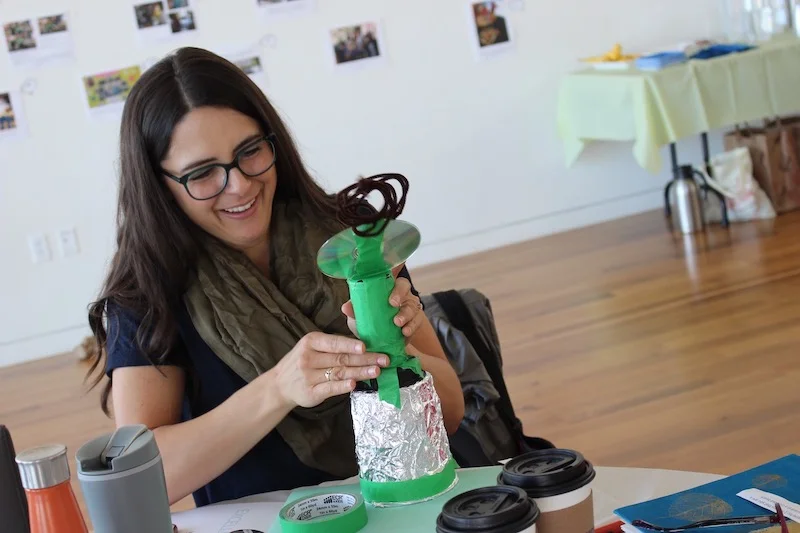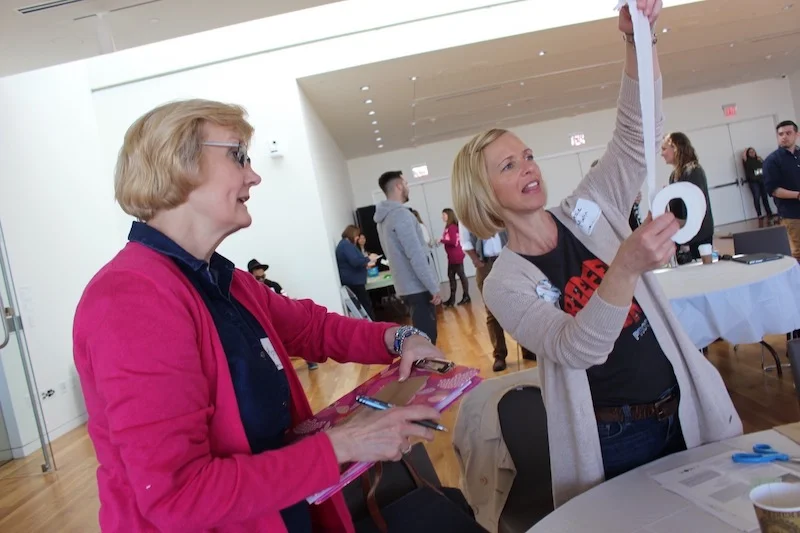Setting Conditions to Think Creatively
Creativity:
The ability to imagine things differently, apply critical thinking, and generate new and valuable ideas
Gather dozens of teachers in a room. Stock tables with scraps of colorful crepe paper, cardboard boxes, pipe cleaners, fabric samples, skeins of yarn, twist ties, scissors, masking tape, empty egg cartons and coffee tubs. Give each of them a challenge: Make a zip line for a farm animal…Create a space suit for a dinosaur…Design a trophy for the best haircut…Ride on a magic carpet…Host a soccer tryout for ants. Witness the results: laughter, spontaneity, engagement, and innovation.
“Creativity begins
in small and playful
ways. It doesn’t
happen by
accident.”
“Creativity begins in small and playful ways,” says Jennifer Lehe, the Manager of Strategic Partnerships at Columbus Museum of Art. “It doesn’t happen by accident. People don’t become more creative because you tell them it’s important. They become more creative because you set the conditions for curiosity to thrive; you set the conditions for play.”
For several years, Ms. Lehe has administered a summer workshop to help teachers in central Ohio understand what creativity looks like in learning and how they might model, foster, and assess it in their classrooms. It’s not about looking for a “whacky way” for teachers to deliver content, she explains; it’s about setting the conditions (with space, time, and expectations) for students to think creatively.
The Teaching for Creativity Institute takes place for four full days in June with three follow-up sessions scheduled on Saturdays during the school year. It is open to teachers of all grade levels -- Pre-K through 12 -- and content areas. For several years, the annual event attracted an intimate group of highly intentional teachers who were already experimenting with creativity in their classrooms. Under Ms. Lehe’s leadership, it has grown significantly.
Individuals who participate in the Institute vary in their creativity “expertise.” Some are very comfortable with the process; others are experimenting with it for the first time. Ms. Lehe believes that variety adds value to the experience and she nurtures an atmosphere where participants learn from each other.
“I describe the Institute as a cross between grad school and summer camp,” Ms. Lehe says while detailing the experience teachers will have during the course of the program. It’s a lot of group work and group conversation. Together, they engage in a variety of activities that address topics such as creating cultures of thinking; sparking behaviors of creativity; and making student thinking visible.
“The first time I ran the Institute I underestimated the importance of creating simple, low risk opportunities for teachers to practice creativity,” Ms. Lehe admits. “You can’t expect that teachers are going to create conditions for students to practice something if they aren’t comfortable practicing it themselves.”
During the Institute the teachers get that practice at least twice a day. These hands-on challenges allow teachers to “play around and warm up their imaginations.” And they are simple ideas teachers can immediately implement in their own classrooms.






